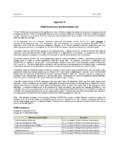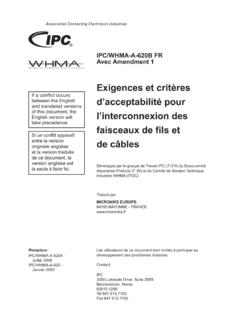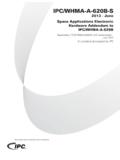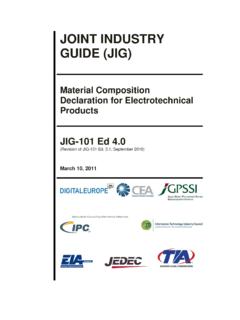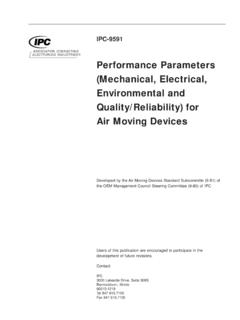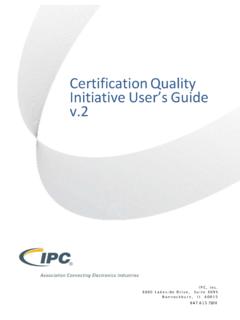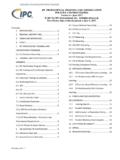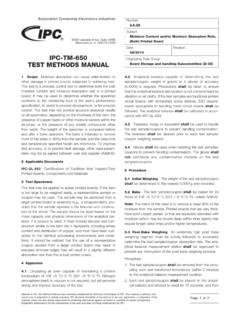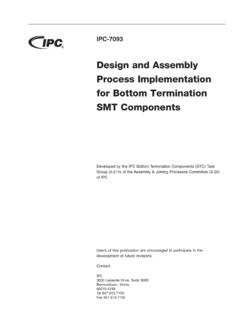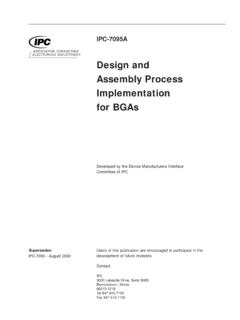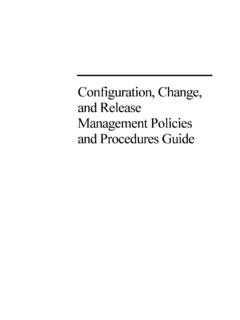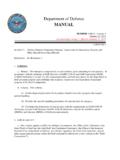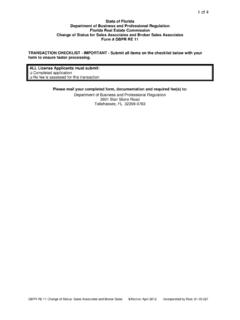Transcription of Rework, Modification and Repair of Electronic Assemblies
1 IPC-7711B/7721B change 1 November 1, 2011 Rework, Modification and Repair of Electronic Assemblies Developed by the Repairability Subcommittee (7-34) of the Product Assurance Committee (7-30) of IPC These procedures are new additions to the IPC-7711B/7721B. The pages herein are authorized for download, reproduction, and printing for insertion into the IPC-7711B/7721B. These procedures are not intended for previous versions of IPC-7711/7721. Users of this publication are encouraged to participate in the development of future revisions. Contact: IPC 3000 Lakeside Drive, Suite 309S Bannockburn, Illinois 60015-1249 Tel 847 Fax 847 GENERAL REQUIREMENTSC lauses (Basic Considerations), (Workstations, Tools, Materials and Pro-cesses) and (Lead Free) provide important information and guidance about theuse of this procedure, including but not limited to tin-lead and lead-free alloys.
2 Thisprocedure is also applicable to lead free procedure identifies the procedural steps which need to be accomplished toaffect bottom termination component (QFN, LGA, BTC) removal. Each step must betailored to accommodate the attributes and characteristics of the specific systembeing used (systems manufacturers will customarily provide generalized operatingprocedures which must be further refined to achieve optimum results).NOTEThe following preconditions shall be accomplished prior to performing the proce-dures:1. Develop a time/temperature profile (TTP) for the specific bottom terminatedcomponent (BTC) and Moisture sensitive components (as classified by IPC/JEDEC J-STD-020 or equiva-lent documented procedure) must be handled in a manner consistent withJ-STD-033 or an equivalent documented procedure.
3 If cleaning solvents such assaponifier or DI water enter the vent holes, it can cause internal capacitors in thepart to corrode and this corrosion can eventually impact proper part parts include, but may not be limited to Flip Chip FPGAs in the Bake the PCB to remove moisture which may, if not removed, precipitate measlingor Handling Electronic Baking and PreheatingEQUIPMENT REQUIREDHot gas reflow systemGas focusing nozzlePreheater7711 ReworkRevision:Date: 10/11 Bottom Terminated Component RemovalHot Air Type: R, F, CSee Level: ExpertSee of Conformance: MediumSee in this manual, IPC-7711/7721 Rework, Modification and Repair of Electronic Assemblies , was voluntarily establishedby Technical Committees of IPC.
4 This material is advisory only and its use or adaptation is entirely voluntary. IPC disclaims allliability of any kind as to the use, application, or adaptation of this material. Users are also wholly responsible for protectingthemselves against all claims or liabilities for patent infringement. Equipment referenced is for the convenience of the userand does not imply endorsement by EQUIPMENTN/AMATERIALSFluxCleanerPROCEDUR ENOTE:Some systems do not include integrated preheating capability and it may benecessary to preheat the PCB and BTC Place the PCB in the system work piece Inject flux underneath the BTC (optional).3. Set hot gas reflow system to achieve the TTP defined by procedural Perform alignment of gas nozzle to component Bring gas focusing nozzle in to reflow Perform TTP re-flow cycle defined by procedural Confirm solder melt of ALL joints and lift component from Release component onto a heat resistant Allow PCB to Clean and inspect PCB as appropriate to customer GUIDELINESV isual examination of the following:Solder connectionsBoard damageConductor damageComponents damageConformal coating or Solder resist damageIPC-7711 :Date: 10/11 Subject.
5 Bottom Terminated Component RemovalPage2of2 GENERAL REQUIREMENTSC lauses (Basic Considerations), (Workstations, Tools, Materials and Pro-cesses) and (Lead Free) provide important information and guidance about theuse of this procedure, including but not limited to tin-lead and lead-free alloys. Thisprocedure is also applicable to lead free REQUIREDS older removal systemConvective reflow stationOPTIONAL EQUIPMENTR eflow ovenBake-out (vacuum, convection) ovenMATERIALSFluxCleanerTissues/wipesPol yimide solder ball stencil carrier to suit componentNOTEM oisture sensitive components (as classified by IPC/JEDEC J-STD-020 or equivalentdocument procedure) must be handled in manner consistent with J-STD-033 or anequivalent documented component can withstand multiple reflow cycles.
6 Multiple reflow cycles maydegrade the component and the Remove excess solder in accordance with procedures , , or (seeFigure 1).2. Clean and inspect BGA for Apply flux to lands on BGA (see Figure 2).4. Place BGA on top of polyimide solder ball stencil carrier (solder balls up and whitetape down) (see Figure 3).5. Place BGA and carrier onto the reflow station or into a reflow oven and reflow usingestablished Allow BGA to cool for 30 - 60 seconds and remove polyimide solder ball stencilcarrier from BGA (see Figure 4).7. Clean and inspect the Bake BGA as 1 Figure 2 Figure 3 Figure 47711 ReworkRevision:Date: 10/11 BGA Reballing ProcedurePolyimide Solder Ball Stencil Type: R, CSee Level: AdvancedSee of Conformance: HighSee in this manual, IPC-7711/7721 Rework, Modification and Repair of Electronic Assemblies , was voluntarily establishedby Technical Committees of IPC.
7 This material is advisory only and its use or adaptation is entirely voluntary. IPC disclaims allliability of any kind as to the use, application, or adaptation of this material. Users are also wholly responsible for protectingthemselves against all claims or liabilities for patent infringement. Equipment referenced is for the convenience of the userand does not imply endorsement by :Date: 10/11 Subject:BGA Reballing ProcedurePage2of2 GENERAL REQUIREMENTSC lauses (Basic Considerations), (Workstations, Tools, Materials and Pro-cesses) and (Lead Free) provide important information and guidance about theuse of this procedure, including but not limited to tin-lead and lead-free alloys.
8 Thisprocedure is also applicable to lead free procedure outlined below is generic in nature and identifies the procedural stepswhich need to be accomplished to affect bottom terminated component (BTC)installation. This process requires the need for a split vision system for alignment of theBTC. Each step must be tailored to accommodate the attributes and characteristicsof the specific system being used (system manufactures will customarily providegeneralized operating procedures which must be further refined to achieve optimumresults).NOTEThe following preconditions shall be accomplished prior to performing the proce-dures:1. Develop a time/temperature profile (TTP) for the specific BTC and BTC / Moisture sensitive components (as classified by IPC/JEDEC J-STD-020 or equiva-lent documented procedure) must be handled in a manner consistent withJ-STD-033 or an equivalent documented Bake the PCB to remove moisture which may, if not removed, precipitate measlingor Handling Electronic Baking and PreheatingEQUIPMENT REQUIREDHot air, hot gas reflow systemGas focusing nozzle (sized to package dimensions)Gas supply (if other than ambient atmosphere)Preheat method (oven, hotplate, high intensity lamp)
9 Handheld miniature SqueegeeFigure 1 Figure 2 Figure 3 Figure 47711 ReworkRevision:Date: 10/11 Bottom Terminated DeviceInstallation Pre-bump and Type: R, F, CSee Level: ExpertSee of Conformance: MediumSee in this manual, IPC-7711/7721 Rework, Modification and Repair of Electronic Assemblies , was voluntarily establishedby Technical Committees of IPC. This material is advisory only and its use or adaptation is entirely voluntary. IPC disclaims allliability of any kind as to the use, application, or adaptation of this material. Users are also wholly responsible for protectingthemselves against all claims or liabilities for patent infringement.
10 Equipment referenced is for the convenience of the userand does not imply endorsement by EQUIPMENTBake-out oven (vacuum, convection)X-RAY inspection systemForced (ambient) air cooling systemInert gas supply, if usedMicroscope/vision systemEndoscopeMATERIALSS older pasteCleanerStencils for Part BumpingKapton tape-ESDPROCEDURE1. Remove solder from surface of part lands and clean (see Figure 1) (seeprocedures or ).2. Place the part stencil, aligning it with part lands and applying pressure to Squeegee solder paste with a manual squeegee into the apertures. Clean offsurface of stencil (see Figure 2).4. Set hot gas reflow system to achieve the TTP of the BTC defined by Perform alignment of gas nozzle to component Bring gas focusing nozzle in to reflow Perform TTP reflow cycle defined by procedural analyses (see Figure 3).
